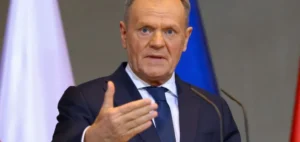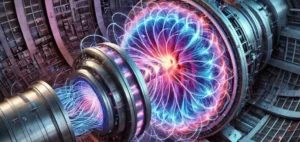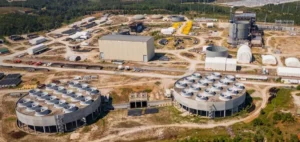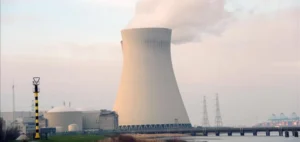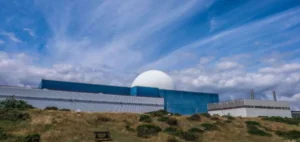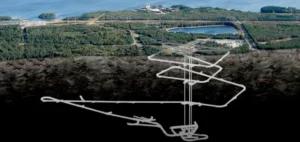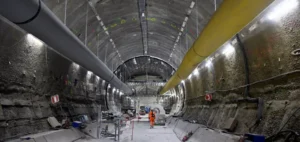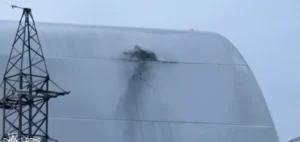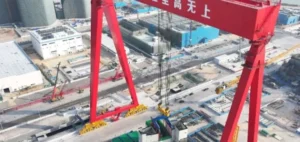Nuclear fusion, once seen as a futuristic concept, became a tangible reality in 2023. This year has seen some notable advances, particularly in the United States. These advances mark a milestone in the evolution of nuclear fusion technology.
At the same time, major projects such as ITER in France, STEP in the UK and EAST in China have reached decisive milestones. These advances underline the viability of nuclear fusion as a renewable and sustainable energy source. These advances mark a pivotal moment in the quest for clean energy, and a significant step towards the global energy transition.
International Advances in Nuclear Fusion
In the USA, the National Ignition Facility (NIF) at Lawrence Livermore National Laboratory has reached a decisive milestone. Thanks to its implosion confinement technique, the NIF generated a fusion reaction approaching the energy required for ignition.
This phenomenon, in which fusion becomes self-sustaining, represents a major step forward. This notable multi-megajoule NIF performance sets a new record for inertial confinement fusion.
In addition, private companies such as General Fusion and TAE Technologies have also made progress. General Fusion’s magnetic fusion technology has attracted over $100 million for its prototype fusion reactor.
TAE Technologies has advanced its research into aneutronic fusion, a promising method that could significantly reduce the production of radioactive waste.
In South Korea, KSTAR (Korea Superconducting Tokamak Advanced Research) continued to push back the frontiers of fusion science. In 2023, KSTAR maintained a plasma temperature in excess of 100 million degrees Celsius for over 20 seconds, a world record. This performance is crucial as it brings us closer to the conditions required for sustained, controlled nuclear fusion, paving the way for commercially viable fusion reactors.
These advances, in both the USA and South Korea, are not just technical successes, but also clear indicators of progress towards the realization of nuclear fusion as a viable and sustainable energy source. These developments suggest that fusion, long considered an energy source of the future, could become a practical reality in the decades to come.
Investments and International Collaborations
The year 2023 saw a spectacular increase in investment in the nuclear fusion sector, marking growing interest from both the public and private sectors. These investments reflect worldwide recognition of the potential of nuclear fusion as the energy source of the future.
The ITER project, an international collaborative effort involving countries such as the United States, Russia, China, the European Union, India, Japan and South Korea, has seen its budget exceed 20 billion euros. This colossal sum is financing the construction and operation of the world’s largest tokamak, an experimental facility designed to prove the feasibility of large-scale nuclear fusion. ITER’s funding, from international contributions, underlines the global commitment to the development of this technology.
In the private sector, innovative start-ups such as Commonwealth Fusion Systems and Tokamak Energy have made significant waves. U.S.-based Commonwealth Fusion Systems has raised over $200 million in Series B financing, bringing its total funding to over $250 million. The aim is to build a compact, economically viable fusion reactor using state-of-the-art superconducting magnets.
UK-based Tokamak Energy has also attracted substantial investment, topping the $100 million mark. The company is focusing on the development of compact, high-performance tokamaks, with the aim of producing commercially viable fusion energy by the end of the decade.
These massive investments in private companies demonstrate growing confidence in the commercial potential of nuclear fusion. They also point to a trend towards a diversification of fusion approaches and technologies, suggesting that the future of this energy source could see a variety of solutions and innovations emerge.
Adapting regulatory frameworks
The rapid evolution of nuclear fusion technology underscores the urgent need to update existing regulatory frameworks. International regulators, including the International Atomic Energy Agency (IAEA), face the complex challenge of developing standards specifically designed for Fusion Power Plants (FPPs). These standards must not only guarantee safety and environmental protection, but also encourage innovation and technological progress in the sector.
The development of these regulatory frameworks requires a balanced approach that takes into account the unique characteristics of FPPs, notably their lower hazard potential compared to traditional fission nuclear power plants. This means revising safety standards, radioactive waste management protocols and environmental protection measures.
In addition, it is essential to integrate an international perspective into the development of these regulations, given the global nature of merger projects and the international collaboration required for their success. Efforts are underway to harmonize regulatory approaches across different jurisdictions, facilitating the sharing of knowledge, technologies and best practices. For more information on the latest advances and discussions in this field, see this research article.
Putting the right regulatory framework in place is a crucial step towards commercializing nuclear fusion. It will not only guarantee the safety and security of fusion facilities, but also create an environment conducive to investment and innovation in this promising field.
Environmental Impact and Social Acceptance
The environmental impact of nuclear fusion, coupled with public perception and acceptance, is a crucial issue for the future of this technology. Fusion Power Plants (FPPs) stand out for their promise of cleaner energy, characterized in particular by significantly reduced production of radioactive waste compared with conventional nuclear power plants. This characteristic positions nuclear fusion as a potentially revolutionary energy alternative in the context of the global climate crisis.
However, the management of radioactive waste, although less problematic in terms of volume and radiotoxicity than that resulting from nuclear fission, remains a matter of concern. It is imperative to develop waste management strategies that are not only efficient and safe, but also transparent and environmentally responsible. This means investing in waste treatment and storage technologies, as well as in research to further minimize their impact.
At the same time, social acceptance of nuclear fusion depends largely on communication and public education. It is essential to inform communities about the environmental benefits of fusion, as well as the measures taken to mitigate potential risks. Information campaigns and educational programs can play a key role in building a social consensus around this technology.
In addition, the involvement of stakeholders, including local communities, environmental organizations and political decision-makers, is fundamental to shaping an energy policy that incorporates nuclear fusion in a responsible and sustainable way. Collaboration between scientists, regulators and the public is therefore essential to ensure that nuclear fusion is adopted as an integral part of the global energy transition, while respecting environmental and social concerns.
Technical and Scientific Challenges
Despite its revolutionary potential as an energy source, nuclear fusion faces a series of major technical and scientific challenges. These challenges are inherent to the very nature of fusion, and require significant advances in several key areas of research and engineering.
One of the main obstacles is mastering high-temperature plasma. For fusion to occur, the plasma must be heated to extreme temperatures, often several times higher than those at the heart of the sun. Maintaining a stable plasma at such temperatures requires a thorough understanding of plasma physics and advanced confinement technologies, such as tokamaks or stellators, which are still being perfected.
Managing the enormous amount of energy generated by fusion is another major challenge. This energy needs to be captured and efficiently converted into electricity, which requires the development of innovative and efficient energy conversion systems. Heat management and overload prevention are critical aspects in ensuring the safety and durability of melting plants.
The development of materials capable of withstanding extreme conditions is also a crucial challenge. The materials used in fusion reactors must be able to withstand high temperatures, intense radiation and constant bombardment by energetic particles. Research focuses on creating new materials or improving existing ones to meet these stringent requirements.
Finally, nuclear fusion requires advances in our understanding of the underlying physical phenomena, such as plasma turbulence, plasma-wall interactions, and the fusion processes themselves. Research in these areas is essential to optimize reactor designs and improve the efficiency of the fusion process.
These technical and scientific challenges require close international collaboration, substantial investment in research and development, and a multidisciplinary approach to overcome. Their resolution is crucial to making nuclear fusion a practical reality and a viable energy source for the future.
International collaboration and knowledge sharing
International collaboration is an essential driving force behind progress in nuclear fusion, a field in which national borders are becoming increasingly blurred in the face of such enormous scientific and technical challenges. Global initiatives such as ITER are a perfect illustration of this global cooperation. ITER, an ambitious and innovative project, brings together scientists, engineers and funds from many nations, demonstrating the importance of working together and sharing knowledge to advance this technology.
This international sharing of knowledge and technology is not limited to basic research, but also extends to practical applications and industrial development. It accelerates the pace of discovery and innovation, enabling faster progress towards the realization of fusion as a viable and sustainable energy source.
Beyond its energy potential, nuclear fusion opens the door to considerable economic opportunities. The transition to fusion energy has the potential to radically transform global energy markets. It offers a sustainable alternative to fossil fuels and can stimulate innovation in many related sectors, such as advanced materials, robotics and environmental control technologies.
By 2023, nuclear fusion will be at the forefront of the energy revolution. The advances made in this field, supported by unprecedented international cooperation and a shared determination to overcome regulatory and environmental challenges, are outlining the contours of a new, more sustainable energy era. Nuclear fusion, with its promise of progress and innovation, stands out as a dynamic sector with a promising future.









